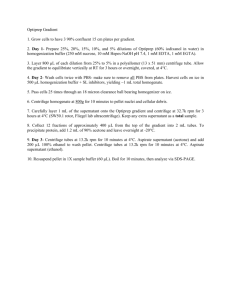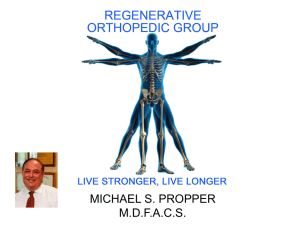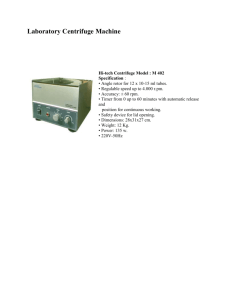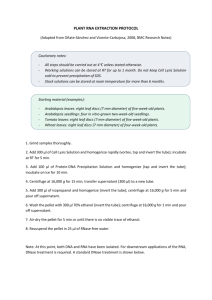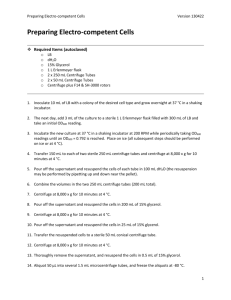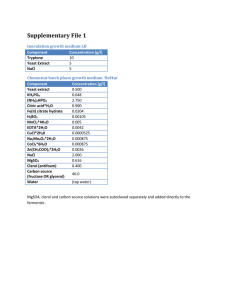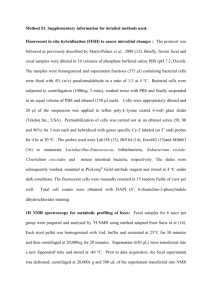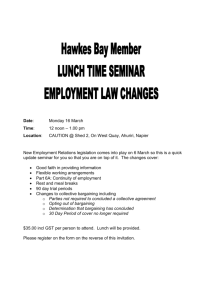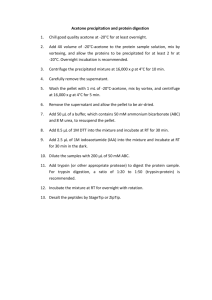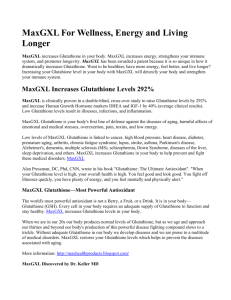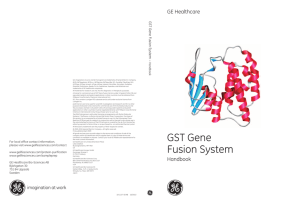The GST-resins is convenient for the purification of glutathione S
advertisement
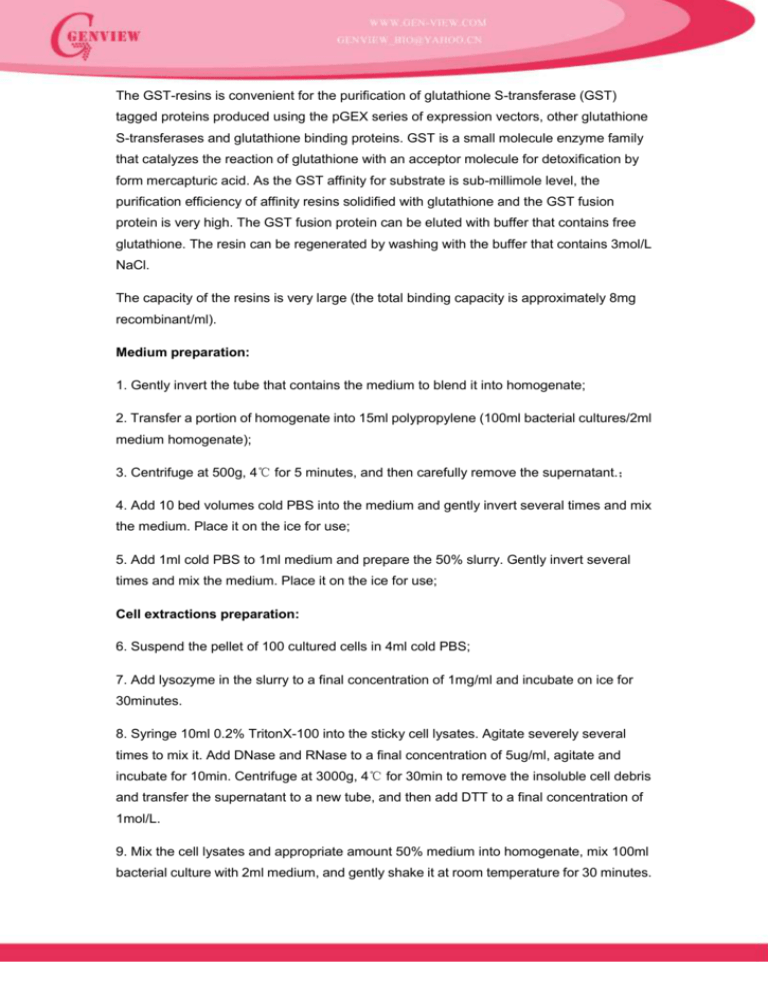
The GST-resins is convenient for the purification of glutathione S-transferase (GST) tagged proteins produced using the pGEX series of expression vectors, other glutathione S-transferases and glutathione binding proteins. GST is a small molecule enzyme family that catalyzes the reaction of glutathione with an acceptor molecule for detoxification by form mercapturic acid. As the GST affinity for substrate is sub-millimole level, the purification efficiency of affinity resins solidified with glutathione and the GST fusion protein is very high. The GST fusion protein can be eluted with buffer that contains free glutathione. The resin can be regenerated by washing with the buffer that contains 3mol/L NaCl. The capacity of the resins is very large (the total binding capacity is approximately 8mg recombinant/ml). Medium preparation: 1. Gently invert the tube that contains the medium to blend it into homogenate; 2. Transfer a portion of homogenate into 15ml polypropylene (100ml bacterial cultures/2ml medium homogenate); 3. Centrifuge at 500g, 4℃ for 5 minutes, and then carefully remove the supernatant.; 4. Add 10 bed volumes cold PBS into the medium and gently invert several times and mix the medium. Place it on the ice for use; 5. Add 1ml cold PBS to 1ml medium and prepare the 50% slurry. Gently invert several times and mix the medium. Place it on the ice for use; Cell extractions preparation: 6. Suspend the pellet of 100 cultured cells in 4ml cold PBS; 7. Add lysozyme in the slurry to a final concentration of 1mg/ml and incubate on ice for 30minutes. 8. Syringe 10ml 0.2% TritonX-100 into the sticky cell lysates. Agitate severely several times to mix it. Add DNase and RNase to a final concentration of 5ug/ml, agitate and incubate for 10min. Centrifuge at 3000g, 4℃ for 30min to remove the insoluble cell debris and transfer the supernatant to a new tube, and then add DTT to a final concentration of 1mol/L. 9. Mix the cell lysates and appropriate amount 50% medium into homogenate, mix 100ml bacterial culture with 2ml medium, and gently shake it at room temperature for 30 minutes. 10. Centrifuge at 500g, 4℃ for 5min. Carefully remove the supernatant and keep a little supernatant for SDS-PAGE electrophoresis; 11. Add 10 bed volumes cold PBS into the pellet, invert the tube several times to remove the protein that is not bind to the medium. 12. Centrifuge at 500g, 4℃ for 5min and carefully remove the supernatant and keep a little supernatant for SDS-PAGE electrophoresis; 13. Repeat 11 and 12 two times; 14. The GST fusion protein binding to the medium can be eluted with glutathione elution buffer or cut by thrombin or enterokinase to release the target proteins. Elute the fusion proteins with glutathione a. Add 1 bed volume glutathione into the pellet and shake gently at room temperature for 10min to elute the protein binding on the medium; b. Centrifuge as 12, transfer the supernatant (contains the fusion protein eluted) into a new tube; c. Repeat a and b two times, and combine the three portions of supernatant. Recover the target protein from GST fusion protein by proteolysis Add thrombin, enterokinase or Xa factor (according to the site used in the fusion protein) in the medium binding fusion protein. Add 50units proteinase in each ml medium and invert the tube several times, shake at room temperature for 2-16hours. Determine the precise time with small-scale experiments. Centrifuge at 500g, 4℃ for 5min and carefully transfer the supernatant into a new tube (The GST still binds on the medium, the target protein is in the supernatant, they need to be separated). 15. Analyze the protein composition of the sample in every step by 10%SDS-PAGE. Reagents: Glutathione elution buffer: 10mol/LGSH,50mol/L Tris-Cl(pH8.0)。

